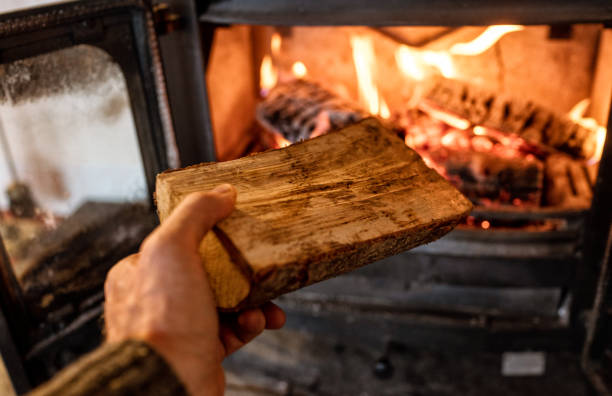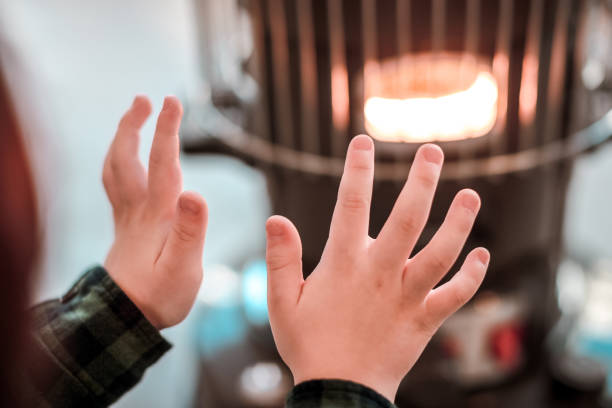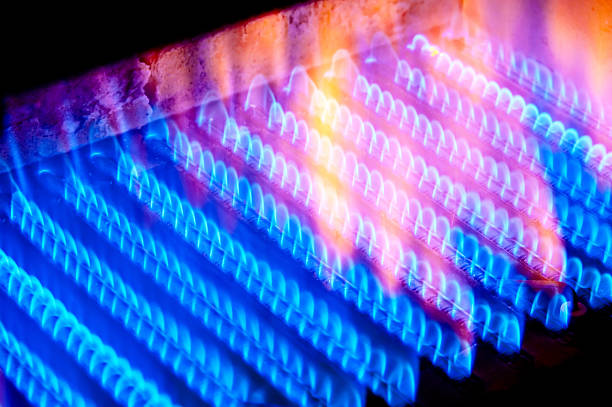- Home
- Ways to Conserve Energy At Home
- Cheapest Way to Heat a Room Without Electricity
10 Cheapest Ways to Heat a Room Without Electricity and Stay Warm On A Budget
When it comes to heating a room without electricity, it can be difficult to find the most cost-effective solution. With the rising cost of energy, many people are looking for alternatives to traditional heating methods. Fortunately, there are many inexpensive options available that can provide the same amount of warmth, if not more, than using an electric heater.
In this blog post, we'll explore some of the most affordable ways to heat a room without electricity. We'll look at the pros and cons of each method and provide tips to help you decide which one is best for you. From using alternative sources of energy to making use of the sun's energy, there are many solutions to keeping your space warm without relying on electricity.
We'll also discuss the importance of insulation and how it can help you maintain a comfortable temperature in your home. Whether you're looking for an economical way to heat a room or simply want to reduce your energy bills, this blog post has you covered.
1. Utilizing sunlight to heat a room
One of the cheapest ways to heat your living space is to take advantage of the sun. While there are plenty of indoor heating methods to choose from, a little bit of solar power goes a long way towards keeping your home a happy and healthy place.
The best part about using the sun to your advantage is that you'll save money in the long run by no longer needing to rely on your electric bill to keep you warm and toasty. It's also a great way to reduce your carbon footprint. There are a ton of free or inexpensive solar energy options available to you if you know where to look. The best way to find out what works for you is to visit your local energy provider and see if they have any information about their free solar options.
2, Invest in a Wood Stove

If you live in a place where the winters are cold and you don’t have enough electricity to keep your house warm, investing in a wood stove can be one of the cheapest ways to heat a room without electricity. Moreover, it’s an eco-friendly way to warm your home.
You can choose a wood stove based on a number of factors, including size, climate, and efficiency. You also have to consider where you plan to install the stove.
Choosing the right model is critical; it should be able to provide ample heat to your room. In addition, it should be safe and efficient.
High-efficiency models are much more energy-efficient than lower-efficiency ones. In addition, they can save you money on the long run because they use less fuel to produce the same amount of heat.
However, you should note that these types of stoves can release smoke into the air. This is why it’s essential to buy a wood stove that’s EPA-certified.
The EPA standards require that smoke emissions be 15-30 grams per hour or less. Most newer stoves meet these requirements and are considered “clean burning.”
This is a great benefit because it means you won’t have to worry about blackened walls and a so-called “black kitchen” when you turn on the stove.
Besides, newer models feature catalytic devices that help with the emission process and prevent creosote from forming on the interior of your chimney.
When it comes to the design of your stove, you should opt for a model that is easy to clean and has a detachable ash tray. This will save you time and effort when it comes to monitoring the fire and adding wood.
3. Keep the Room at a Consistent Temperature
One of the cheapest ways to heat a room without electricity is by taking advantage of natural heating sources. For instance, the sun has an impact on temperatures throughout the day, so it’s worth opening your curtains when they’re out to take advantage of this free energy source.
Another cheap way to keep a room warm is by using the right type of windows. Old, leaking windows can make your home feel cold, so installing new double-glazed windows is a great option to keep your house comfortable during the winter.
The best part about this technique is that it will save you money in the long run by keeping your home warmer during the winter and cooler during the summer. During the colder months, you can turn your thermostat up and lower it later in the day to save energy and keep your home feeling toasty at the same time.
You’ll also want to consider the humidity level of your home. A humid environment can lead to excessive sweating and a lethargic state, so be sure to have a good moisture control system in place.
Finally, you’ll want to keep an eye on your thermostat to ensure that it’s set at the optimum temperature at all times. It’s especially important to be aware of this when it comes to your bedroom, as the temperature in this area will affect your quality of sleep.
There are many ways to keep your home at a consistent temperature, so find out what works for you and your family. It may take some trial and error, but it will be well worth the effort in the long run.
50 more ways to conserve energy at home
4. Install Double-Glazed Windows
Using air conditioning units and heaters to heat a room can be expensive. These devices consume a lot of energy, which can lead to high power bills and a higher carbon footprint.
Installing double-glazed windows is a great option for reducing your energy costs. This is because they provide thermal insulation. They help reduce the amount of heat that comes into the house, making your home warmer during winter and cooler during summer.
In addition, double-glazed windows also have a seal that prevents condensation from building up on the window panes. Condensation occurs when water molecules in the air become too close together, forming tiny droplets that appear on surfaces like glass and mirrors.
Another advantage of double-glazed windows is that they are more secure than single-glazed ones. They are harder to break and are often backed up by advanced locking mechanisms.
This is a great advantage for people who have young children or live in an area where there is a high chance of burglaries. Having a strong line of defense is crucial in this situation, and having double-glazed windows will make that line of defense even stronger.
The other great thing about double-glazed windows is that they are highly affordable. You can save up to 40 per cent of your electricity costs by installing them in your home.
Investing in double-glazed windows will also increase your property value, which is a huge advantage when it comes to selling your home. This is because homebuyers are looking for properties that are well-insulated, as they will save them money on their heating and cooling bills.
If you are interested in learning more about how to heat your home without electricity, contact us today. We will be happy to answer your questions and provide you with a free estimate!
5. Take Advantage of Passive Solar Heating
If you don't have access to electricity and need to heat a room, you can take advantage of passive solar heating. This is one of the cheapest ways to keep a room warm, and it can help to reduce your energy bills.
Essentially, passive solar heating works by letting the sun's rays into your home and then absorbing and storing the heat it produces. The process begins with south-facing windows that allow the sunlight to enter. Then, this heat is absorbed by materials that are dark in color and have high thermal mass, such as concrete or stone.
In colder climates, this process may be more difficult, but it's still possible to take advantage of it. The best way to do this is with well-tilted windows, which can capture more heat than vertical glass.
Once the heat is captured, it can be transferred to the interior of your home by conduction or stored in a material. You can also use small circulating fans to move the heat to nearby rooms.
Passive solar systems use a combination of south-facing windows, thermal mass, and a few other elements to transfer heat and prevent the room from getting too hot or too cold. There are many different approaches to using these elements, but all of them are based on the same principle: letting the sun's rays in and capturing that energy to heat your home.
A good passive solar design will ensure that your home can retain the soaring temperatures the sun can provide, and will also be highly energy efficient. This can save you money on your utility bills while adding value to your home.
6. Kerosene Heater

One of the cheapest ways to heat a room without electricity is using a kerosene heater. These portable heaters make great alternatives to electric ones and can be used in various places like garages, basements or enclosed porches; they're even great solutions during power outages!
Kerosene heaters with overheat protection, an anti-tip switch and air monitor for safety will provide years of reliable performance. These features will extend the life of your unit and keep it functioning safely for years to come.
Kerosene heaters should always be placed in a well-ventilated space with plenty of fresh air. Without proper ventilation, kerosene heaters can release carbon monoxide into the atmosphere and pose an immediate danger to anyone present.
Make sure the kerosene tank is easily removable so you can fill it outside. Doing this will minimize mess and accidents when refilling the fuel tank.
Another crucial consideration is the heating output in British thermal units (BTUs). Make sure the kerosene heater you select offers enough BTUs to adequately warm your space.
If you need a larger kerosene heater, look for models with large fuel tanks that can run for hours without refueling. This is especially beneficial if your area experiences frequent cold snaps.
When selecting a kerosene heater, make sure it's easy to refill and has a fuel gauge that indicates how much fuel remains in the tank. Furthermore, select one with a low center of gravity so as not to tip over accidentally. Furthermore, check the wick periodically for dirt or debris which could lead to fire or leak hazards.
7. Utilizing a Heat Pump
In areas where electricity isn't always reliable, heat pumps are the cheapest way to heat a room. These units can work with various heating systems and are highly energy-efficient. Furthermore, they're an environmentally friendly alternative to traditional sources of heating such as kerosene, propane or natural gas.
Heat pumps circulate heat around your home, much like air conditioners do. In cold weather, they offer climate control and can cut your electric bill in half compared to using baseboard heaters or furnaces.
Heat pumps come in three varieties: ground-source, water-source and air-source. The most popular type of heat pump used by homeowners is air-source; these units offer affordability and ease of installation at lower costs.
An air-source heat pump utilizes refrigerant to absorb and distribute energy from outdoor air. It then passes it through a compressor which compresses the refrigerant, increasing its temperature.
Heat can then be released and distributed throughout the home, warming each room as needed. Air-source heat pumps may have a coefficient of performance (COP) of four or higher depending on weather conditions and location.
Additionally, hybrid heating systems can be utilized with various other heating sources in a hybrid configuration. Common choices include propane and natural gas; however, distillate fuel oil has become the most prevalent in the Northeast.
Before buying a heat pump for your home, it's essential to determine your budget and the size of the unit. A correctly sized system ensures an even distribution of warmth throughout your residence. Furthermore, having an experienced HVAC contractor assess your requirements and recommend the ideal heat pump is key in making an informed decision.
8. Using a Propane Heater

Propane heaters are an economical way to heat a room without electricity, but it's essential that you understand its safety protocols before using one.
Propane is an eco-friendly fuel source with low emissions, available in large tanks that provide supply for your entire house or smaller portable tanks perfect for camping trips.
When selecting a heater, it is best to pick one with the appropriate BTU rating for your space. Small rooms only require a few thousand BTUs while larger warehouses or gardens require up to 200,000 or more.
The type of fuel you choose for heating your room will determine how much energy is expended. If unsure, contact your local propane dealer to discuss your heating requirements.
Many propane heaters come equipped with safety features to prevent fire and carbon monoxide poisoning. These include a tip-over protection mechanism and oxygen depletion sensor which shuts off the burner when oxygen level drops below 18%.
If you're using a propane heater indoors, it is essential to ventilate the room regularly in order to maintain oxygen levels at safe levels. The ventilation requirements will differ depending on which model you select; however, make sure you open a window for adequate airflow.
It is essential to guarantee the propane heater you are using is in optimal working condition. This includes regularly cleaning the unit and checking that there are no leaks or water contamination. A malfunctioning propane heater can be extremely hazardous, leading to explosions, fires or carbon monoxide poisoning.
9. Insulating the Room
One of the cheapest ways to keep your home warm without using electricity is through insulation. Insulation traps heat inside and cool down air outside your house, allowing your heating system to work more efficiently.
Insulation materials commonly used in homes include fiberglass, cellulose, and spray foam. Each has its own advantages and can be selected in different thicknesses and widths to fit your walls' studs or attic or floor joist spacing.
Fiberglass is often sold in rolls or batts that fit between studs in wall framing. They come with or without a paper or foil facing to act as a vapor barrier and come in various densities to meet your requirements.
Cellulose is a popular insulation material made with up to 80% recycled materials. Not only does it help regulate temperature and sound levels, but it also shields you from moisture damage.
If you are uncertain which insulation to use, consult a professional before beginning any project. They can assist in selecting the ideal product for your home and installing it correctly.
Additionally, you should determine if you qualify for grant funding through the Energy Company Obligation (ECO) scheme. These initiatives are designed to assist those with low incomes or receiving certain types of benefits reduce their energy bills.
There are a few easy steps you can take to insulate your home, such as filling in gaps between skirting boards and floors with silicone sealer or using an insulator. Furthermore, hanging thick, insulated curtains on your windows will reduce heat loss through them.
10. Using a Fireplace or Pellet Stove
Pellet stoves are an environmentally friendly heating source. Made with pellets made from recycled wood chips or sawdust, they come in various sizes and designs to suit any home.
These stoves are easy to install and don't need expensive chimneys or vents. Furthermore, they require less cleaning and upkeep than fireplaces or wood stoves do.
Most pellet stoves use an electric auger that feeds pellets into a burn pot, controlled by thermostat. Once set, the auger turns and releases a steady stream of pellets into the burn pot, where they ignite to produce heat.
Once the pellets are burning, a combustion blower introduces air into the bottom of the burn pot to fuel it. At the same time, this fan also pushes exhaust gases out of the burn pot and into an exhaust pipe.
This process generates a great deal of heat, so these stoves require a convection blower to distribute it throughout the room. These blowers can be found on either back or top of the stove.
They also feature exchangers that distribute heat throughout the room, helping ensure that any warmth generated by a pellet stove is distributed equally throughout the house.
Pellet stoves not only offer a cleaner and safer way to heat your home, but they can also act as an emergency backup source of heat during power outages. In such cases, pellet stoves will keep you comfortably warm for up to one and a half days.
Pellet stoves can produce up to 42,000 British Thermal Units of heat per hour, enough for a small apartment or condo. These heaters come as freestanding units or inserts that fit into existing fireplaces.
Cheapest way to heat a room without electricity-final thought
There are a variety of ways to heat a room without electricity, many of which are quite affordable. Whether you choose to use a space heater, a kerosene heater, or a wood-burning stove, you can find a way to keep your home warm without breaking the bank. With the proper preparation and insulation, you can stay comfortable and save money on your heating costs.